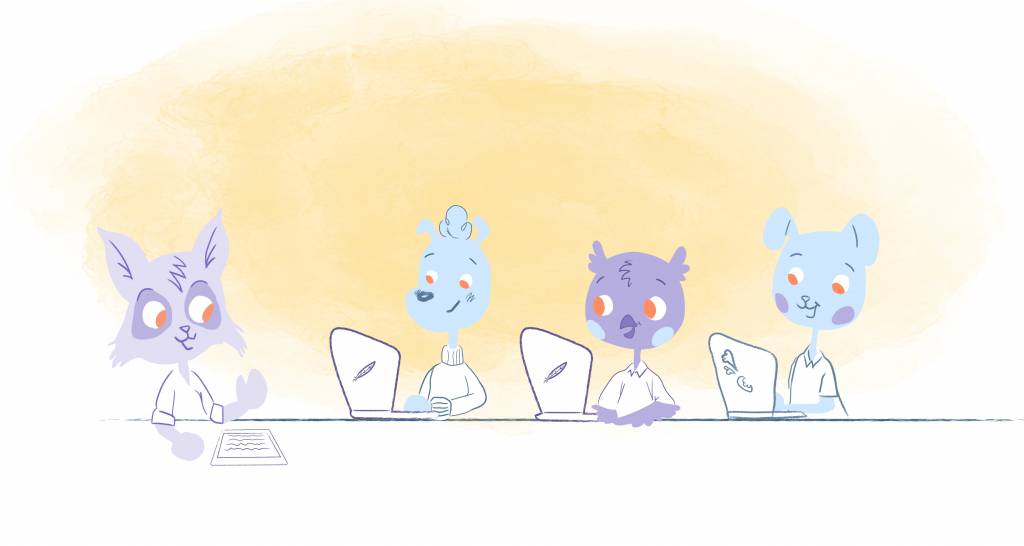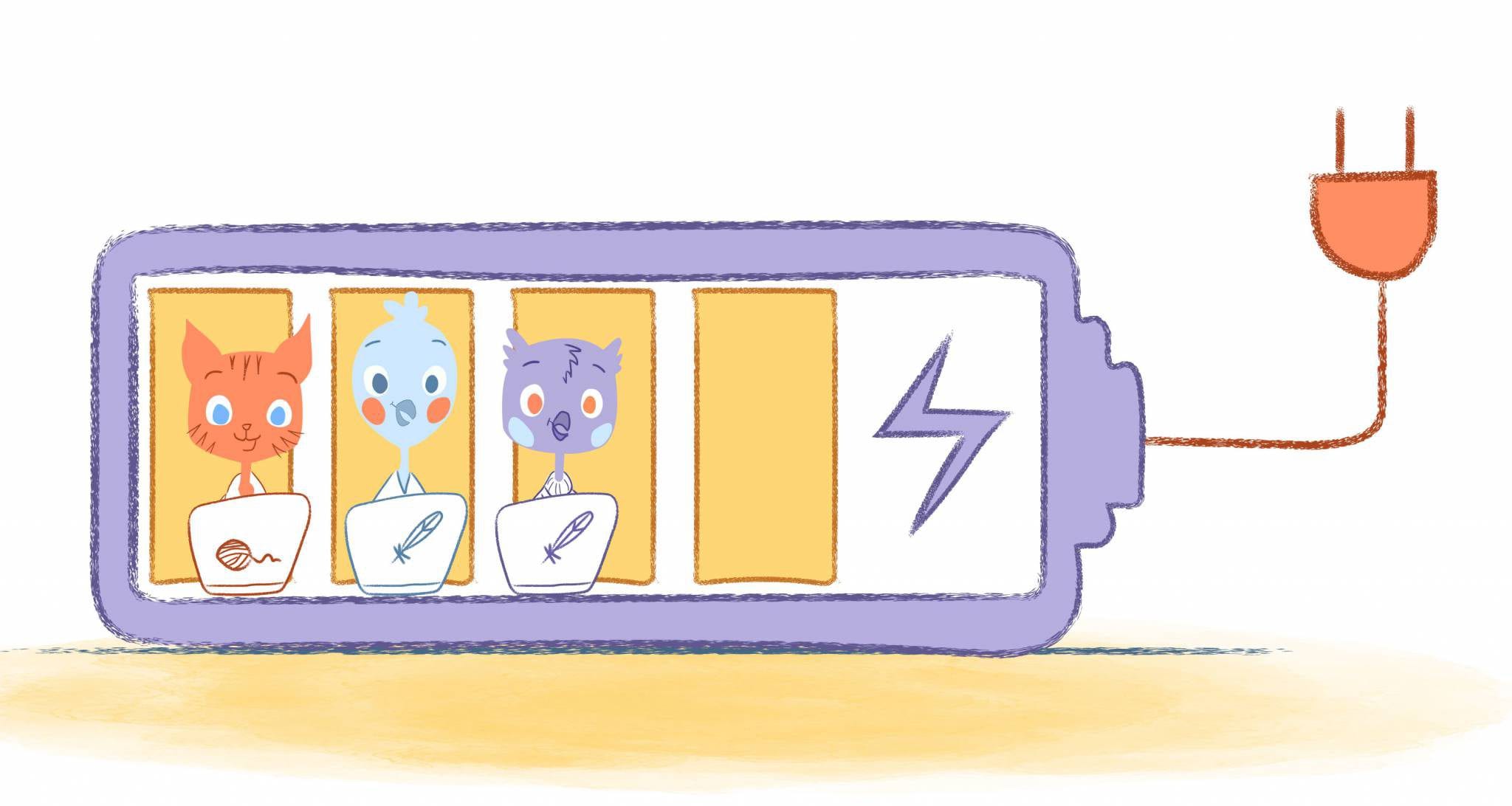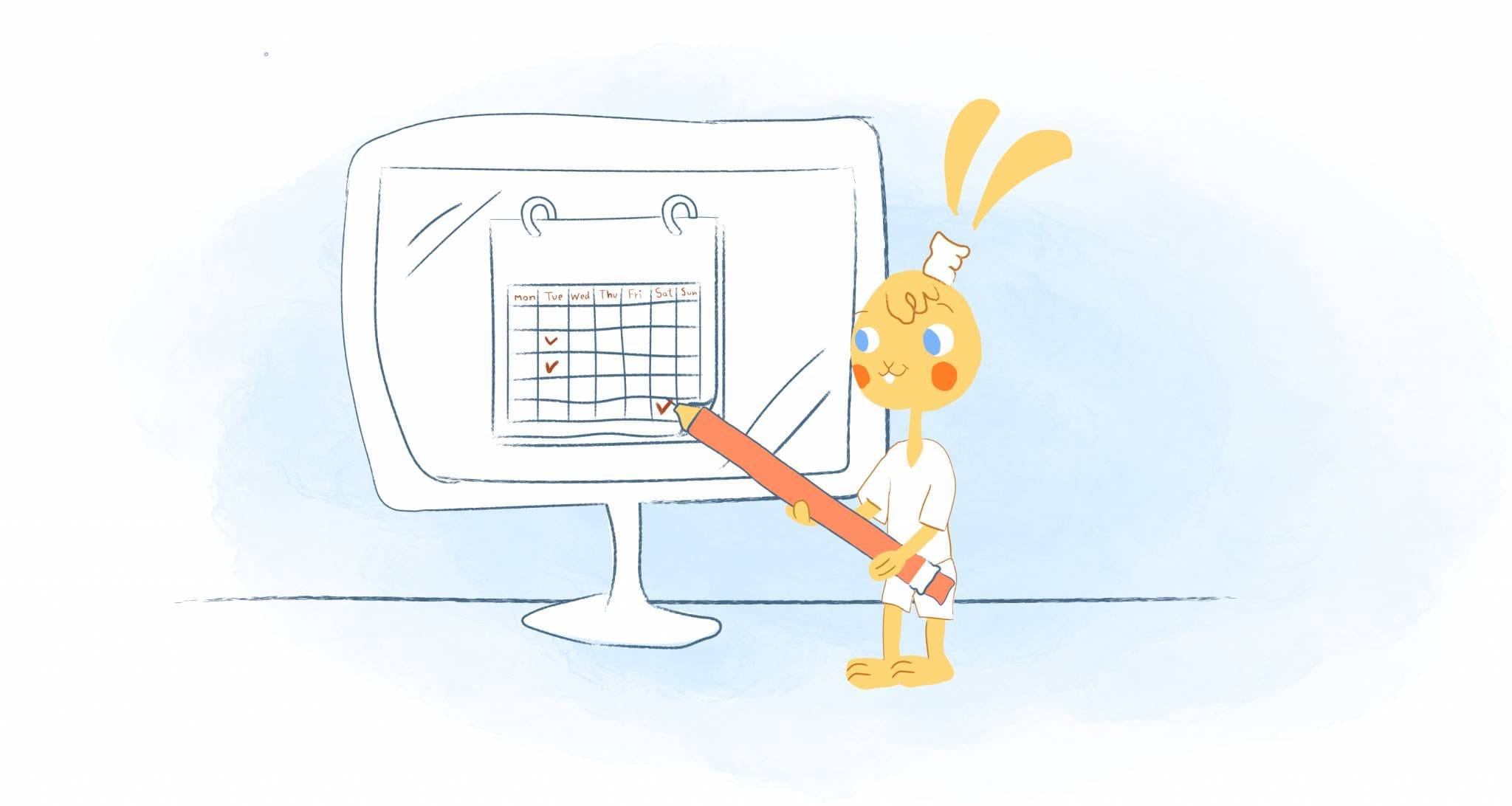

While necessary, meetings can be a real drag. They’re unproductive and ineffective, as well as huge wastes of time. We have a bad habit of calling a meeting when an email would suffice. When you want to run effective meetings, this shouldn’t happen. We let tangents take our meetings an hour past there end time.
Meetings can do some serious harm to your bottom line — and people can’t stand attending them. But it’s not all gloom and doom. By making your meetings more effective, you can turn things around.
Here are the best ways to accomplish that feat.
How to Run Effective Meetings
It can be hard, after years’ worth of lackluster meetings, to know what a great one looks like. According to experts, these are the keys to a well-run meeting:
Invite the right number of people.
Say what you will about Jeff Bezos; the Amazon founder has a knack for not wasting people’s time. No wonder he’s been dubbed “the king of productivity and efficiency.” His preference for efficiency was most visibly on display during meetings.
Bezos has one simple rule: Don’t schedule a meeting for which two pizzas aren’t enough to feed the attendees. Besides introducing pizza to the meeting equation, the main takeaway here is that when it comes to meetings, they should only include key stakeholders.
There’s actually some scientific evidence behind this, thanks to Parkinson’s law of triviality. This concept, developed in 1957 by British naval historian C. Northcote Parkinson, argues that members of a group will give disproportionate weight to trivial issues. For example, you’ve gathered the entire team in the conference room to discuss the goals and objectives of an upcoming marketing campaign. Rather than focus on the campaign, one small comment derails the conversation to discussing what everyone wants for lunch.
Big and little teams aren’t effective.
That statement is just skimming the surface. Research from Stanford University professor Bob Sutton found that big teams suck because:
- Larger teams can put an overwhelming “cognitive load” on individual members.
- When a group expands, people spend more time coordinating chores instead of getting work done.
- It leads to interteam delegation, which can lead to mistakes and miscommunication.
- Dividing your attention between so many people can weaken the group’s “social glue,” which can result in conflicts.
What’s more, experiments conducted by psychologist Solomon Asch “found that people were willing to ignore reality and give an incorrect answer in order to conform to the rest of the group.”
Here’s where things get a bit hairy: Meetings with too few people are also ineffective. While it’s true that smaller meetings have perks, like being intimate enough so everyone has a chance to be heard, having fewer than five attendees doesn’t allow for diverse opinions and perspectives.
The ideal meeting size, Sutton suggests, is “seven, plus or minus two.” Put more simply, to run effective meetings you should host five to nine people.
Keep meetings short and concise.
Remember C. Northcote Parkinson? He developed another famous concept called Parkinson’s Law, which states that “work expands so as to fill the time available for its completion.”
If the average meeting is 52 minutes (which makes sense because that’s how long we’re generally engaged), you’re going to use that exact amount of time. The problem is that you may have only needed 30 minutes. That means you just wasted 22 minutes of valuable time that could have been spent on something more productive.
To make matters worse, when creating a meeting in an online calendar like Google Calendar or Outlook, the system will automatically use the default time, which is 30 or 60 minutes. Instead, Steven Rogelberg, a professor of organizational science, management, and psychology at the University of North Carolina at Charlotte and author “The Surprising Science of Meetings: How You Can Lead Your Team to Peak Performance,” recommends you “think about how much time is truly needed in the meeting.”
How long should a meeting last? Take into account the following: For the average 52-minute meeting, the first 8:32 is spent talking about nonsense. Additionally, the last 14:08 are spent on nothing of importance. If the average person trimmed meetings back to 30 minutes and reduced chitchat to 3:22, he would reclaim 30 minutes from every meeting.
Less is more.
On the flip side, it’s been found that people can only pay attention for 10 to 18 minutes before losing interest. This is exactly why TED Talks are always less than 20 minutes. However, it may take some trial and error on your part to determine how long a meeting should last. As a rule of thumb, it probably shouldn’t go on for more than an hour.
“Short meetings are often used to debrief or actively reflect on an event or occurrence,” Rogelberg tells The Entrepreneurs Project. “Research shows that these types of meetings can enhance future individual and team performance. Plus, short meetings align with research on limited human attention spans and fatigue.”
He adds, “Don’t be wary of scheduling meetings with odd lengths or at unusual times. For example, a 48-minute meeting is just fine if that is the right fit.”
After determining the length of your meeting, Rogelberg encourages leaders to push the time allotted down another five to 10 minutes. If you think, for example, a meeting will take 38 minutes, set it for 32 minutes.
“What we find in research is that, when humans are under a little bit of pressure, they tend to focus better and perform more optimally, so I like the idea of a meeting leader adding a little bit of pressure,” adds Rogelberg. “I like them having more playful times. I don’t care if they start a meeting at 12 minutes after an hour. Give people a little time to do what they were doing beforehand, and then start a meeting, not on the actual hour.”
How to Stay Within the Allotted Meeting Time
To ensure you stay on track and keep meetings productive, which 30 percent of respondents report leaders fail to do, Kevin Daum recommends you:
- Set a specific and detailed agenda. This describes the purpose of the meeting and what will be discussed. Don’t forget to allow for adequate time for each topic, and send the agenda to invitees at least 24 hours in advance.
- Invite only the people that you need. Don’t throw in extras to cover your bases — people will send substitutes as needed.
- Create a structured close. Make time to ask the following questions: What was the takeaway? What should be discussed at the next meeting? How did you feel about the meeting?
Make meetings unforgettable.
A few years ago, Elise Keith at Lucid crunched some numbers and found that there are between 36 and 56 million meetings per day in the U.S. alone. Considering that 46 percent of people would rather visit the DMV, watch paint dry, commute four hours to and from work, or endure a root canal than attend a status meeting, that’s a lot of people sitting miserably through a lot of meetings.
The only way around this is to make your meetings more productive and memorable by:
- Keeping meetings short.
- Inviting fewer people.
- Providing refreshments.
- Perfecting your presentation.
- Keeping people engaged with questions and interactive activities.
You can also follow other companies’ lead and get a little weird with your meetings. For example, on Thursdays, Plum Organics, a baby food manufacturer, holds creative thinking meetings in which everyone colors in coloring books. “It’s proven that coloring during a meeting helps promote active listening, and is more beneficial than multitasking on something like email,” says innovation director Jen Brush.
Mobile game publisher Genera Games shoots hoops, while Brivo, a security management software provider, has a “No Rehash” rule. Whenever a topic has already been discussed, an audience member raises his or her “No Rehash” Ping-Pong paddle so the meeting can move forward.
Schedule meetings on the right day and time.
“The most important tasks should be conducted when people are at or near their peaks in alertness (within an hour or so of noon and 6 pm),” writes Christopher M. Barnes, an assistant professor at University of Washington’s Foster School of Business who studies circadian rhythms.
How does that impact your meetings? While meetings can be important, you and your team probably have a laundry list of priorities that take precedence. In other words, don’t schedule meetings during peak productivity hours. Those slots should be reserved for more important work. Pulling people away from their most important tasks will leave them frustrated.
Also, steer clear of early-morning meetings, when attendees are still waking up. Late afternoons, when we’re mentally drained, can also result in poor decision-making. Instead, science says 2:30 p.m. on Tuesdays is your best option.
Because they’ve already eased their workloads, employees feel more prepared for a mid-afternoon meeting. And, unlike Mondays and Fridays, they’re more likely to be in attendance, both physically and mentally. Expecting focus on a Friday afternoon, when people are thinking about their weekend plans, is self-sabotage.
No electronics allowed.
Why are meetings so unproductive? It turns out that 92 percent of attendees are multitasking, with 69 percent checking their email.
Creating a more engaging meeting is a start. But you can help participants resist this temptation by discouraging the use of electronics during meetings. The Obama administration made cabinet members leave their phones in a basket prior to entering a meeting.
You could also ask staff to leave their devices in their offices, suggesting they manually take notes. Not only does this prevent distractions, but it can also help them retain information and understand concepts better. To back this up, psychologists Pam Mueller and Daniel Oppenheimer compared the notes of 327 undergraduates and found that those with handwritten notes remembered more information later on and “did significantly better on both conceptual and factual questions.”
Don’t disturb the sound of silence.
As noted in a previous Calendar article, science has proven that silence can be extremely beneficial. It can regenerate brain cells, relieve stress, and replenish our mental resources. And, believe it or not, it’s also useful during meetings.
According to Rogelberg, there have been more than 80 different studies comparing the brainstorming results of meetings where ideas were said aloud versus those where they were written down. The ideas developed by the more interactive group were fewer and of lower quality.
Stand up.
Andrew Knight and Markus Baer of Washington University conducted a study on stand-up meetings versus sit-down meetings. They discovered that standing up during a meeting leads to better collaboration and more excitement regarding the creative process. This was mainly due to the fact that people were less protective of their ideas.
Knight first noticed this during weekly scrum meetings. “From an outsider’s perspective, these meetings always seemed more collective and interdependent than sitting meetings. Usually, people were crowded around a whiteboard working diligently to resolve a pressing problem,” he said. “The meeting also seemed more efficient and purposeful.”
Bob Sutton and Jeff Pfeffer also picked up on this while writing “Hard Facts.” Because there was only one chair between the two of them, they had no place to sit. As a result, they “took care of business quickly.” This inspired them to launch a study comparing the decisions made by 56 work teams with stand-up meetings against those made by 55 groups holding seated meetings. All of the meetings lasted 10 to 20 minutes, but “in the stand-up meetings, groups took 34% less time making decisions, with no real difference in the quality of the decision.”
Harness the power of AI.
Artificial intelligence, which consists of natural language processing, machine learning, and bots, is still in its early stages. We’re already witnessing its influence in areas like scheduling. For example, intelligent calendars can suggest when and where a meeting should occur after reviewing past invites. You can also create a new event just by speaking into your smartphone.
We’re not completely reliant on AI just yet, but AI can record meetings and transcribe and email notes after they’ve concluded. It can make smart suggestions on the invitees and documents needed. This technology can also automatically assign tasks and meeting roles. And it may even be able to read the room so it can make suggestions on how to keep specific attendees engaged.
Solicit feedback from participants.
Rogelberg’s research reveals that leaders have a blind spot where meetings are concerned. He explains, “When folks leave a meeting, there is one person who invariably says, ‘Hey, that was a good meeting.’ Can you guess who that person is? It’s the leader.”
When following up after the meeting, Rogelberg recommends including meeting performance questions, employee engagement surveys, or 360-degree assessments. Leaders can survey the team themselves. “Without such information, organizations — and more importantly, individual leaders — are left in the dark about whether their meetings are working,” says Rogelberg. “In turn, they remain blind to employee suggestions on how to improve meetings.”
Invest in training.
If you review data regarding meetings, there’s a common theme: Both attendees and leaders believe a given meeting was unsuccessful. One study shows that 67 percent of executives consider meetings a failure. Not to mention the psychological price of meetings isn’t even considered. At the same time, according to Rogelberg, just 20 percent of them receive any type of training.
“The solution to bad meetings? How about a day of meeting training? How about if we improve our meeting process?” writes Dan McCarthy, the director of Executive Development Programs at the University of New Hampshire who also runs the Management & Leadership channel of About.com. “Maybe it’s the leader’s fault, and they need to learn how to run better meetings.”
Attend workshops, enroll in an online class, or join an organization like Toastmasters. Doing so will help you learn how to run effective meetings. They may even give you the opportunity to put your new skills in action by practicing in front of a live audience.
Meetings can be a real drag, but they can also be a real asset. By determining how to improve the setup and tone of your meetings, you can keep people focused, energized, and open to others’ ideas. Not all meetings are pointless — most just need more structure. You can run effective meetings if you put plan accordingly.











John Hall
John Hall is the co-founder of Calendar a scheduling and time management app. He’s also a keynote speaker that you can book at http://www.johnhallspeaking.com.